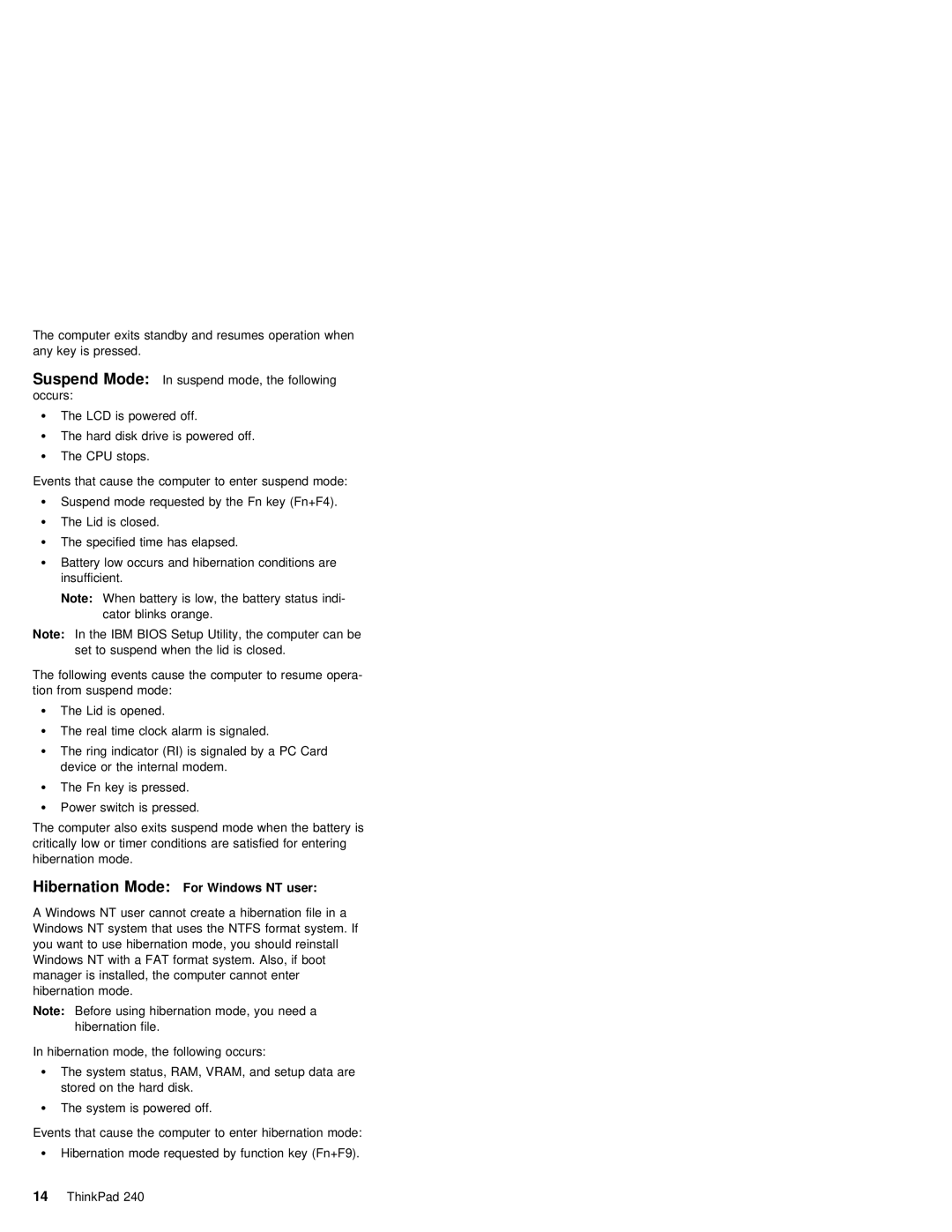The | computer | exits standby and resumes operation when |
any | key is | pressed. |
Suspend Mode: In suspend mode, the following occurs:
Ÿ The LCD is powered off.
Ÿ The hard disk drive is powered off.
ŸThe CPU stops.
Events that cause the computer to enter suspend mode:
Ÿ Suspend mode requested by the Fn key (Fn+F4).
Ÿ The Lid is closed.
Ÿ The specified time has elapsed.
ŸBattery low occurs and hibernation conditions are insufficient.
Note: When battery is low, the battery status indi- cator blinks orange.
Note: | In | the | IBM | BIOS | Setup | Utility, the computer | can be |
| set to suspend when the lid is closed. |
| |||||
The | following | events | cause the computer to resume | opera- | |||
tion | from suspend mode: |
|
|
| |||
Ÿ | The | Lid | is opened. |
|
|
| |
Ÿ | The | real | time | clock | alarm | is signaled. |
|
ŸThe ring indicator (RI) is signaled by a PC Card
device or the internal modem.
Ÿ The Fn key is pressed.
ŸPower switch is pressed.
The computer also exits suspend mode when the battery is critically low or timer conditions are satisfied for entering hibernation mode.
Hibernation Mode: | For Windows NT user: |
A Windows NT user cannot create a hibernation file in a Windows NT system that uses the NTFS format system. If you want to use hibernation mode, you should reinstall Windows NT with a FAT format system. Also, if boot manager is installed, the computer cannot enter hibernation mode.
Note: Before using hibernation mode, you need a hibernation file.
In hibernation mode, the following occurs:
ŸThe system status, RAM, VRAM, and setup data are
stored on the hard disk.
ŸThe system is powered off.
Events that cause the computer to enter hibernation mode:
Ÿ Hibernation mode requested by function key (Fn+F9).
14 ThinkPad 240
